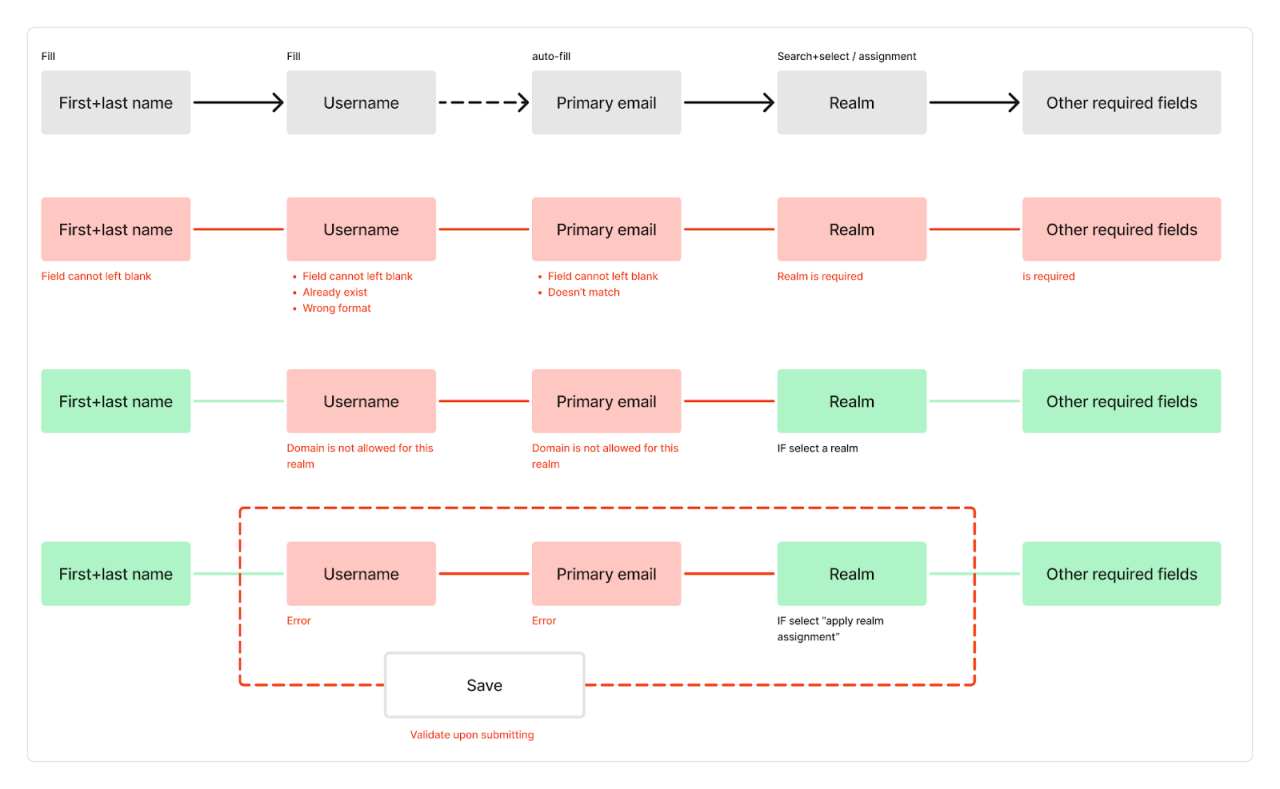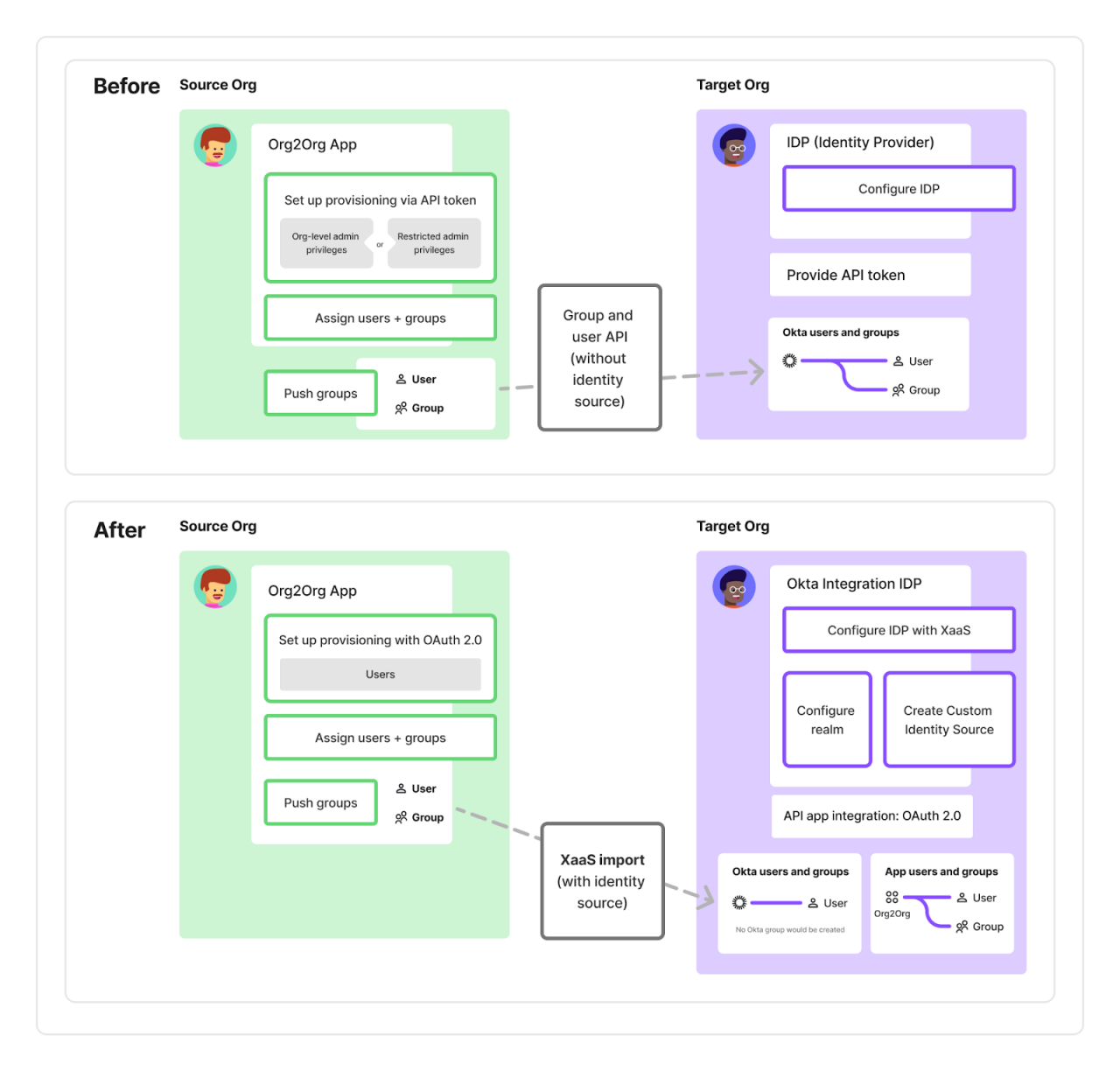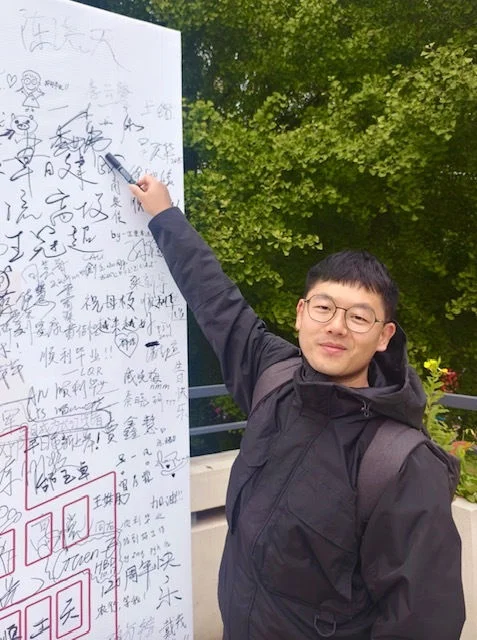TL;DR
Ever felt frustrated when a product partner tries to explain a complex system using only a document? Or felt discouraged trying to talk through a user flow without any mock-ups? You're not alone—this is a common challenge in our day-to-day work at Okta. Humans are visual creatures. As product designers, we have a superpower: our ability to use visuals. In this article, I'll share how I've leveraged visuals throughout the product design lifecycle to make life easier for myself and my teammates.
Why it matters
This is where your design superpower empowers the entire team
Drive more clarity
The most powerful outcome of using visuals is the clarity and alignment they create. The visual artifact itself isn't the final goal; it's a method for communication. Whether it’s a quick sketch or a low-fidelity task flow, your visual reflects how you've digested complex information. By sharing these visuals, you're essentially showing your team how you understand the problem, making it an easy and effective way to communicate.
Empower productive thinking
In addition to driving clarity, another benefit of using visuals is it would encourage yourself and your teammates to think more. Generally, when you translate what information you receive (by reading or listening) to a visual, you are putting fragmented information pieces together. The process itself encourages yourself to think systematically, which is an important skillset in a technical domain like Okta.
A favor for your partners
Your product partners (product managers and engineers) may not be experts in creating visuals, but they often need them for their own work. Some might try to create them, while others give up. I've seen many examples where a PM simply used a visual I created for their presentation—a perfect example of teamwork and mutual trust.
When to practice
Opportunities for using visuals are everywhere in your process
Understand the system
This is where visuals can play a key role in driving clarity and helping your team navigate the next steps. Design initiatives at Okta are often based on complex product domains, and you might have zero prior knowledge. Imagine getting a 30-page product specification full of different product areas, multi-admin personas, permission models, and acronyms you've never heard of. What do you do?
You have many options, but mapping out what you understand is a great one. I usually sketch out how I believe the current system works. Don't worry if it's messy—as I mentioned, the visual itself isn't the goal. It's an effective way to start a conversation with your product and engineering partners and move forward.

Navigate the direction
Consider the stage where the problem is clear and your team is ready to think about high-level solutions, as a product designer, this is your chance to bring a user-centric mindset and advocate for the best experience for your target personas.
A practical activity is to visually map out all the data you’ve gathered (e.g., from research) and present it in an organized way. This is a crucial step for transforming knowledge into ideas. Whether they're assumptions or actionable technical requirements, this is a moment for you to shine by aligning your teammates to envision the future of your product.

Execute the solution
When you move to the design execution stage, designers often create a design specification for engineers to reference. However, it can sometimes be challenging to communicate a design with only mock-ups or prototypes.
For instance, to communicate how different input validations work on a creation form, I created a logic map. Since some inputs had dependencies and more than one validation rule, this map provided a clear overview of the expected behavior. Instead of sharing numerous screens, this was a more efficient way to communicate how the system should function.

Tell the story
Sometimes you need to tell a short but clear story about your work. This could be a quick ramp-up for a new employee or a short presentation for stakeholders. It's always challenging to cover all the details of a complex project in just five minutes.
And again, think about using visuals! Try to compress key information into a small diagram. It can be flexible, depending on what you want to highlight (e.g., user actions, products by owning teams, security improvements). You'll find it's a productive way to communicate and, at the same time, encourages your audience to think, just as you do with your teammates.

How to get support
Driving visual artifacts doesn’t mean you have to do it alone
Involve your teammates
Since you want your visuals to communicate with and inspire your team, it's always valuable to involve your teammates. They can act as co-creators, sharing opinions on what should be highlighted. For example, a PM can be a great partner, as they have well-rounded knowledge ranging from UX to technical requirements.
You can also invite other designers to work together if your project is related to their product domains. Beyond creating the visuals, this is a great opportunity to think about how your work connects to a larger system.
Think about a workshop
It's possible that the person you want to involve doesn't have enough knowledge to support you, or you might just want input from a wider audience. Consider a workshop. Facilitating a workshop gives you a chance to hear from a larger group of people. They might come from the engineering team you don't regularly interact with or be PMs from adjacent teams who can help fill knowledge gaps.
For example, a workshop helped me better map user pain points and think through UX opportunities. My team was in the middle of the double diamond process. We had a high-level definition of product requirements but weren’t clear on what experience could be improved. To help map things out, I invited several PMs and designers to a workshop. While most didn't know the entire end-to-end journey, their own product areas interacted with my work. In this context, they still contributed many insightful ideas that led me to a more confident design proposal.
Additional tips
Here are my 2 additional tips.
First, think about your audience and their context. Just like preparing a presentation, considering who will see your work helps you create more valuable visuals. Unlike a presentation, people who see your visual will rely only on what's there. So, making sure your visual artifact aligns with their context will set you up for success.
Second, practice like an equal partner. Sometimes we rely on PMs and engineers for their knowledge, but it's possible they don’t have all the answers either. In the early stages of a product's lifecycle, it's common for no one to have a perfectly clear image in their mind. If that's your situation, just be bold and take an initiative. Use a sketch to talk about what you think, or map out what's known and what isn't. A simple sketch could have a positive impact on the team's ability to navigate through ambiguity.
Summary
Visuals are a designer's superpower for tackling ambiguity and complexity. They're a powerful tool for driving clarity, aligning with teammates, and sparking creative thinking throughout the entire product lifecycle.
My advice is to just go and try it. There's no wrong way to create a visual, whether it's a quick sketch or a detailed diagram. So, grab a whiteboard, open a new file, and start drawing your way to be a better product design partner!






